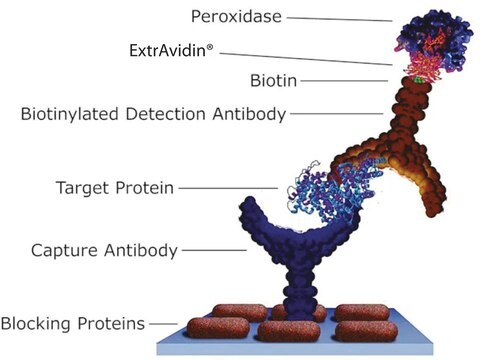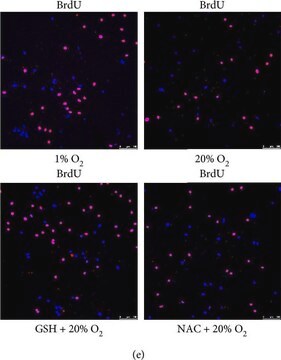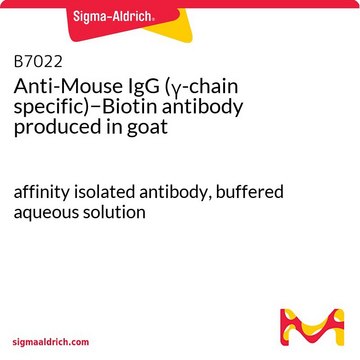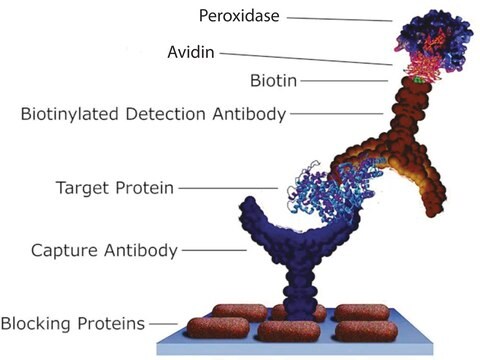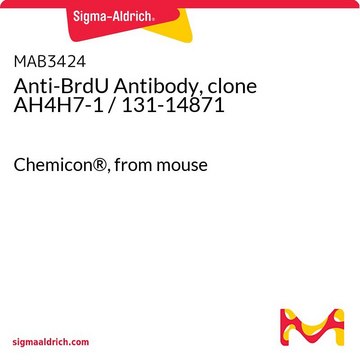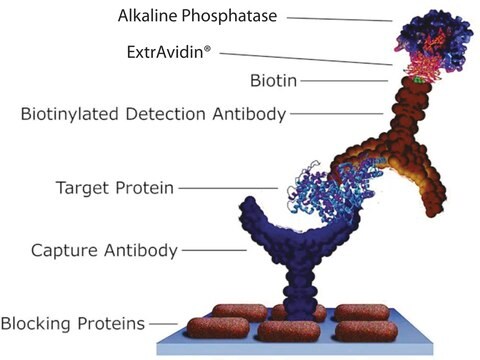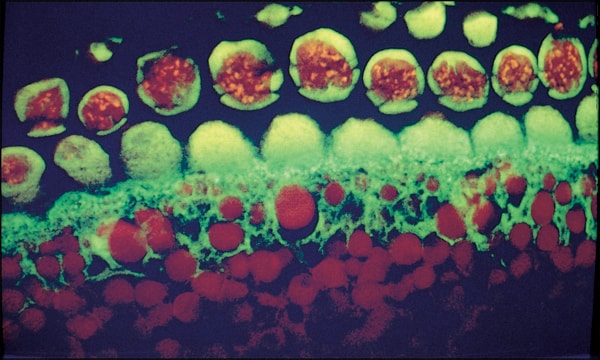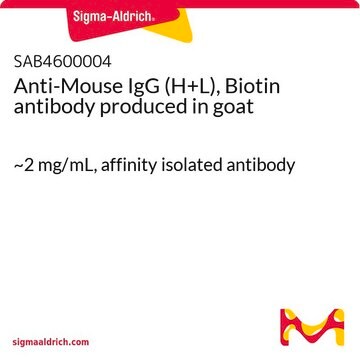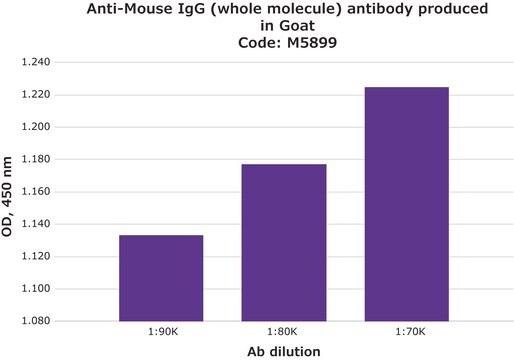B6649
Anti-Mouse IgG (whole molecule)−Biotin antibody produced in goat
affinity isolated antibody, buffered aqueous solution
Faça loginpara ver os preços organizacionais e de contrato
About This Item
Produtos recomendados
fonte biológica
goat
conjugado
biotin conjugate
forma do anticorpo
affinity isolated antibody
tipo de produto de anticorpo
secondary antibodies
clone
polyclonal
Formulário
buffered aqueous solution
técnica(s)
direct ELISA: 1:20,000
temperatura de armazenamento
2-8°C
modificação pós-traducional do alvo
unmodified
Procurando produtos similares? Visita Guia de comparação de produtos
Descrição geral
The product binds all mouse Igs.
Aplicação
Anti-Mouse IgG (whole molecule) antibody produced in rabbit is suitable for ELISA at a working dilution of 1:20,000. It may be used for immunohistochemistry of formalin-fixed, paraffin-embedded sections at a dilution of 1:1000.
Ações bioquímicas/fisiológicas
IgG antibody subtype is the most abundant of serum immunoglobulins of the immune system. It is secreted by B cells and is found in blood and extracellular fluids and provides protection from infections caused by bacteria, fungi and viruses. Maternal IgG is transferred to fetus through the placenta that is vital for immune defense of the neonate against infections. The coupling of biotin to Anti-Mouse IgG antibody allows for the binding of various labels such as avidin or streptavidin.
Outras notas
Antibody adsorbed with human serum proteins.
forma física
Solution in 0.01 M phosphate buffered saline pH 7.4, containing 1% bovine serum albumin and 15 mM sodium azide.
Nota de preparo
Adsorbed to reduce background with human samples.
Exoneração de responsabilidade
Unless otherwise stated in our catalog or other company documentation accompanying the product(s), our products are intended for research use only and are not to be used for any other purpose, which includes but is not limited to, unauthorized commercial uses, in vitro diagnostic uses, ex vivo or in vivo therapeutic uses or any type of consumption or application to humans or animals.
Não está encontrando o produto certo?
Experimente o nosso Ferramenta de seleção de produtos.
Código de classe de armazenamento
10 - Combustible liquids
Classe de risco de água (WGK)
nwg
Ponto de fulgor (°F)
Not applicable
Ponto de fulgor (°C)
Not applicable
Escolha uma das versões mais recentes:
Já possui este produto?
Encontre a documentação dos produtos que você adquiriu recentemente na biblioteca de documentos.
Os clientes também visualizaram
M I Napp et al.
International journal of developmental neuroscience : the official journal of the International Society for Developmental Neuroscience, 18(6), 531-544 (2000-07-08)
Subcultured astroglial cells from striatum, cerebral cortex and ventral mesencephalon obtained from primary cultures of fetal (E14, E17 and E21) or postnatal (days 5-6) rats showed different regional, age-dependent morphological response (stellation) to cyclic AMP. While most of the cerebral
Carolina Veaute et al.
Fertility and sterility, 91(4), 1256-1268 (2008-04-29)
To assess the effect of antiacrosin antibodies upon proacrosin/acrosin activities and animal fertility. Prospective study. Basic research laboratory. A gene immunization (GI) model was developed; mice were injected with the sequence encoding human proacrosin (h-proacrosin), cloned in an expression vector.
F Lefèvre et al.
Experimental cell research, 271(1), 84-93 (2001-11-08)
Metabolic functions of fibroblasts are tightly regulated by the extracellular environment. When cultivated in tridimensional collagen lattices, fibroblasts exhibit a lowered activity of protein synthesis, especially concerning extracellular matrix proteins. We have previously shown that extracellular collagen impaired the processing
Marieta Ruseva et al.
Immunology, 127(2), 279-288 (2009-05-30)
Mannan-binding lectin (MBL) is a plasma protein implicated in innate immune defence against a broad range of microorganisms, including viruses. It is also thought that MBL plays a role in the recruitment of the specific clonal immune response. This was
Elaine Mo Hayes et al.
Frontiers in immunology, 5, 537-537 (2014-11-13)
Rupture of advanced atherosclerotic plaques accounts for most life-threatening myocardial infarctions. Classical (M1) and alternative (M2) macrophage activation could promote atherosclerotic plaque progression and rupture by increasing production of proteases, including matrix metalloproteinases (MMPs). Lymphocyte-derived cytokines may be essential for
Nossa equipe de cientistas tem experiência em todas as áreas de pesquisa, incluindo Life Sciences, ciência de materiais, síntese química, cromatografia, química analítica e muitas outras.
Entre em contato com a assistência técnica